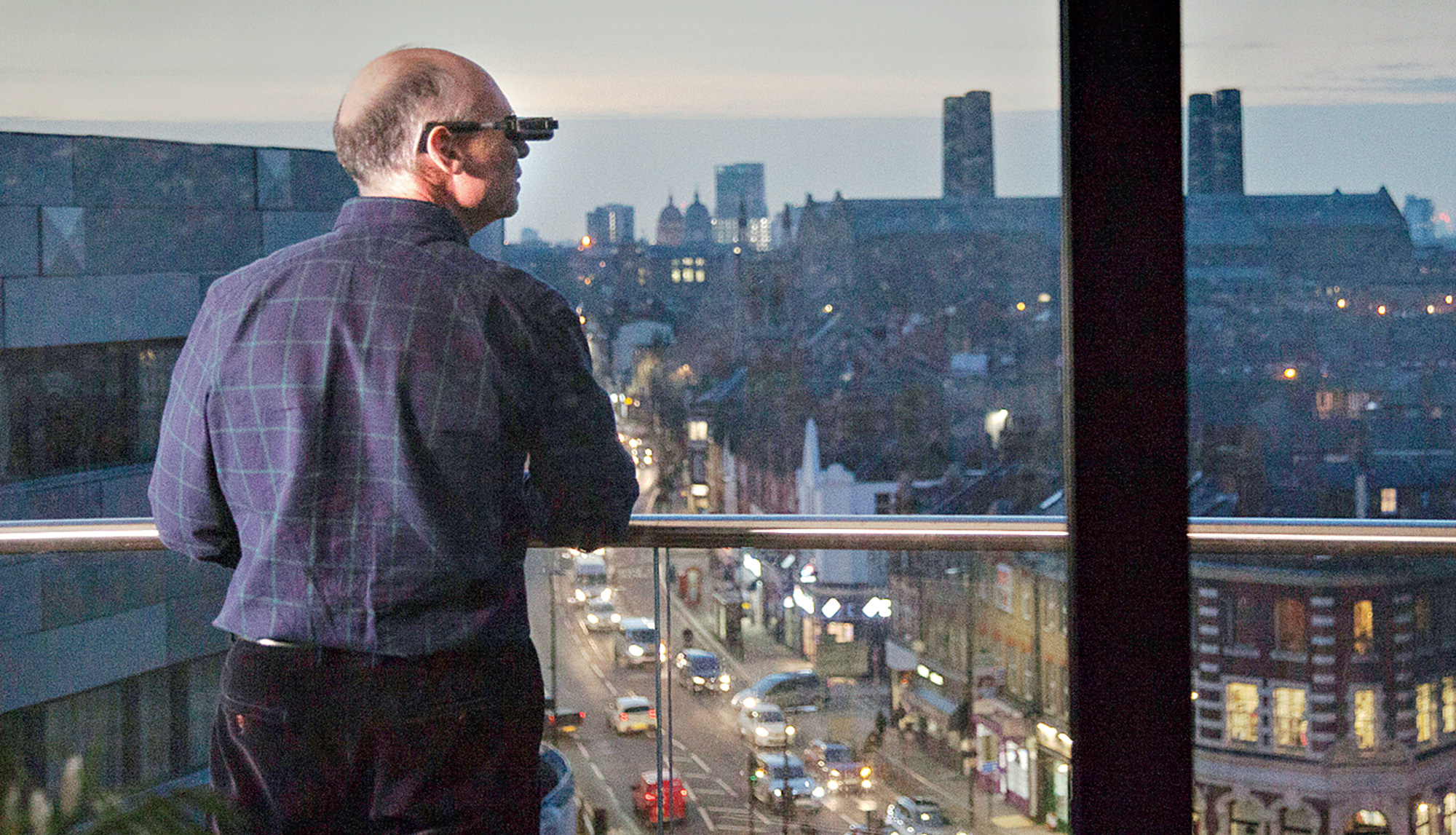Around 39 million people across the world are totally blind, 246 million have low vision and another 285 million have some visual impairment, according to World Health Organisation data (2014). In India around 54 million people have low vision — those who have lost sight to conditions such as age-related macular degeneration, diabetic retinopathy, glaucoma and retinitis pigmentosa. However, 90 per cent of people who are legally blind retain some residual vision.
Moreover, even if sight is lost due to the causes above, it is only the eyes that are damaged. The part of the brain that picks up visual clues from the surroundings and processes them remains unaffected. And about nine out of 10 people who are legally blind actually have some sort of vision. This means that most of these partially-sighted people can actually have improved vision with the right technology.
“Our aim is to allow individuals to make the most of this residual vision,” says neuroscientist and visual prosthetic researcher Dr Stephen Hicks of Oxford University in the UK. At Oxford’s Nuffield Department of Clinical Neuroscience, with support from the Oxford Eye Hospital, Hicks and his team used their understanding of how the brain interprets visual information to develop algorithms that replicate the way we see.
In 2016, UK-based Indian-origin physicist and entrepreneur Rakesh Roshan helped the team at Oxford start the spin-out company, OxSight, to develop the knowhow to create smart glasses — or, a wearable technology device — for the sight impaired. A series of successful trials in the UK has shown that OxSight glasses can help the blind and partially blind to locate objects, recognise people and navigate independently.
Roshan helped put together a team of scientists and clinicians who combined a deep understanding of neuroscience, ophthalmology, computer vision and machine learning. He tells KnowHow, “We aim to move swiftly to develop these glasses for the blind and partially sighted for day-to-day use. Some of the users have already given us feedback and co-operation, and our aim is to hit the regulatory, technical and manufacturing milestones as quickly as possible.”
David Quigley happens to be one of the first people in the UK to have a pair of OxSight glasses. In the course of a video interaction, he spoke about the difference the glasses have made to his life. Quigley’s sight had been considerably reduced for more than 20 years and his retina was gradually breaking down. He had difficulty seeing at night and was losing side or peripheral vision. He was seeing faded colours and experiencing a strange “tunnel vision”.
“I was in my early 30s when I noticed a significant loss of sight,” he says. “The doctors told me that I had retinitis pigmentosa [a rare genetic disorder]; it’s progressive and there isn’t any effective treatment.” But with OxSight Prism glasses, he can see a lot better, regained some peripheral vision and his perception of colour improved, even in low light. “One of my best moments was being able to see my niece’s face on her wedding day inside a church in Slovakia.” Without the glasses, she would have been just a blob to him.
OxSight glasses can help tunnel vision by a process called “field expansion”. Hicks tells KnowHow, “We capture a wide image with the glasses’ camera and then show a zoomed-out version of this image on the inside of the glasses digital screens. The wearer has the ability to control its magnification to suit different circumstances. In some cases we can increase a person’s field of view from a small tunnel of say 5 degrees up to more than 60 degrees. That’s enough vision to see a table full of people, or gain a better view of the surroundings and obstacles.”
Concurs Quigley, “I could see her face [at the wedding] as I could zoom in and also intensify the light to see the congregation. It was such a wonderful feeling.”
For blurry sight (in glaucoma) they “also pack a load of real-time image filters into the glasses to enhance outlines and improve contrast and colours of nearby objects. This can often help clear up vision,” adds Hicks.
The OxSight smart glasses use augmented reality and image interpretation technology to enhance vision. It has a unique camera system and computer vision algorithms to detect and highlight objects, separating them from the background in real-time. The glasses can be controlled via a hand-held console and are fitted with a camera which streams a live-feed into high-resolution video displays.
Unlike most other smart glasses, these have a user control that is natural and intuitive. Says Hicks, “We designed a system whereby the user can point and rotate their hand just like they would control a radio.” OxSight is planning on building night vision capabilities into future glasses. “We tested a night vision system (along with Google) some years ago that helped people see enough to walk without help through dark cinemas,” says Hicks.
OxSight has started a few testing centres in India, including in Calcutta and New Delhi. Dr Monica Chaudhary, director of the Low Vision Centre at Ansal University in New Delhi, is one of the experts working with the company. She says, “The augmented reality glasses are revolutionary and can present an expanded field of vision which had been a challenge for earlier technology or devices.”
At the moment, the price of the glasses is too steep for most Indian patients. “With further research, innovation and increasing adoption, the costs will come down as happens with all new technologies,” Dr Chaudhary adds.










